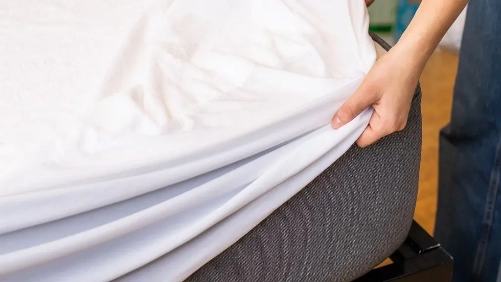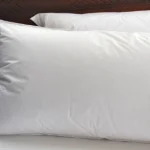
Exploring the Pinnacle of Comfort: Unveiling the Superiority of Goose Down Pillows in Elegance and Durability
December 18, 2023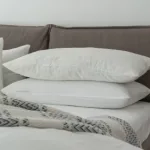
Cotton Pillows vs. Polyester Pillows: A Comprehensive Guide to Optimal Sleep Comfort
December 21, 2023Do you use a mattress protector?
Mattress protectors play a vital role in maintaining your mattress from spills and stains, especially for those that cost more. Many of you may be wondering what is the best material for a mattress protector.
The answer to this question depends on your needs and personal preferences. Read on as Oka goes into more detail about the pros and cons of each material to help you make an informed choice about the mattress protector that’s right for you.
Premium material for mattress protector
Organic bamboo mattress protector
Organic bamboo is a sustainable plant that grows quickly without the need for pesticides or chemicals. Bamboo is naturally antibacterial and hypoallergenic, making it great for people with sensitive skin.
Although bamboo has excellent breathability and moisture-wicking properties, it is relatively less durable. But with proper care, a bamboo protector can still last.
It’s important to note that not all bamboo fiber products are environmentally friendly, and some manufacturers use unsustainable production methods. It is best to understand the production process of the product before purchasing it.
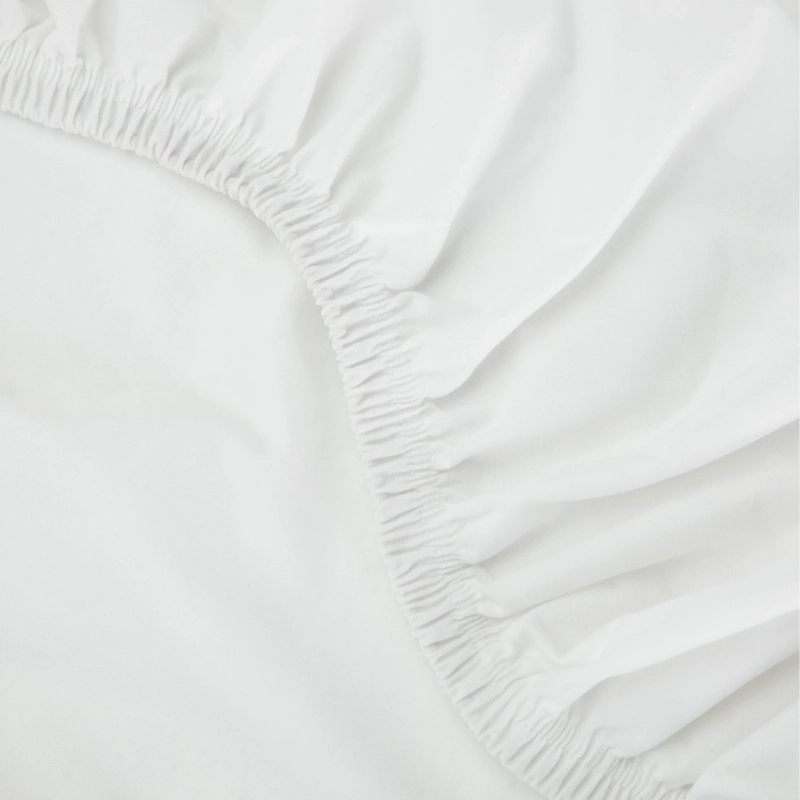
Linen
Linen is made from the flax plant and is another sustainable option. Similar to bamboo, linen is breathable and temperature-regulating, while also being hypoallergenic and antimicrobial.
Linen is more durable than bamboo, so you can expect it to last longer. Although the price may be slightly higher, it is a worthy investment for those looking for the best quality.
organic cotton
Organic cotton remains one of the most common materials used in mattress protectors. As a natural fiber, organic cotton is breathable, soft, and durable enough to withstand frequent washing.
Cotton is also a good insulator, so it can regulate your body temperature while you sleep. However, if you are very sensitive to temperature regulation, then you may want to consider other, better options.
Regular cotton uses large amounts of pesticides and other chemicals during its production and is therefore considered not environmentally friendly. For sustainability, it is recommended to choose organic cotton.
Polyester mattress protector
Polyester is a synthetic fiber and therefore not as environmentally friendly as other materials. Although virgin polyester is less sustainable, recycled polyester is a popular choice that offers durability and excellent waterproof properties.
Polyester is extremely durable and has excellent natural water resistance, making it ideal for mattress protectors.
However, compared to other materials, polyester fiber has poor breathability. So if you tend to feel hot at night, you may want to look for other options.
Featherbed
Feather beds are the traditional choice of mattress protectors and are made of feathers. Down feathers are soft and light but are relatively expensive. For those on a budget, there are also models made from slightly coarser feathers.
Feather mattress protectors are relatively less durable and require regular grooming to maintain their shape.
Lyocell/Tencel
Lyocell/Tencel is a relatively new fabric made from eucalyptus pulp. The fabric is soft and breathable, making it ideal for those who feel the heat easily.
Tencel is the brand name of Lenzing AG, while Lyocell is the common name for the manufacturing process and fiber. Aoka has the brand authorization of Lenzing AG, so Aoka’s Tencel is genuine and of high quality, and the price is very cheap.
Plush velvet
Plush velour is an ultra-soft fabric made from polyester, cotton, or a blend of both. Its pile is short and soft to the touch, similar to velvet.
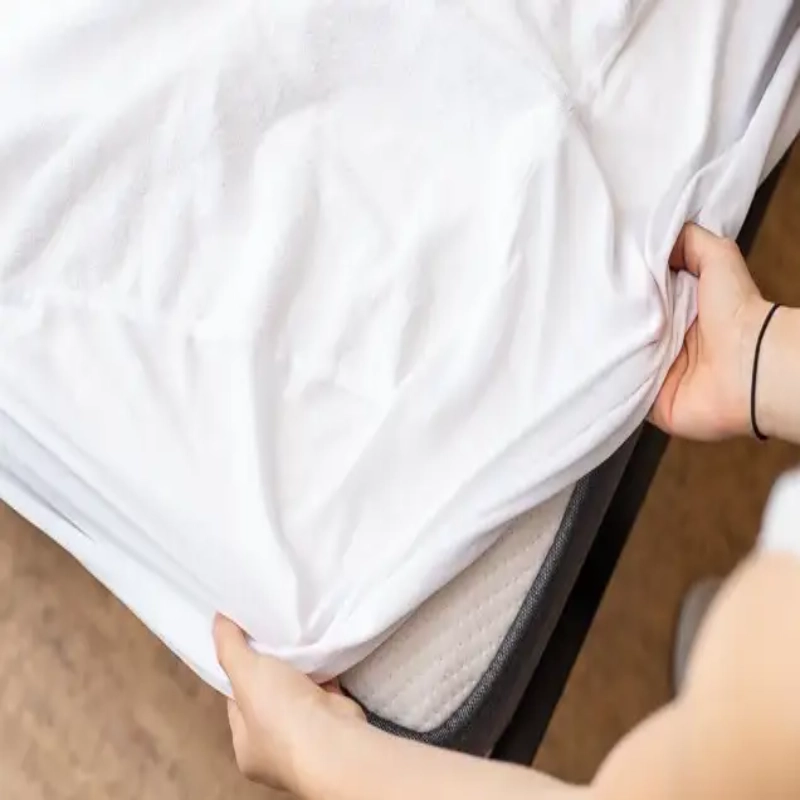
Types of mattress protectors
There are different types of mattress protectors, depending on your needs:
General wear and tear: A basic mattress topper will suffice.
Liquids and Spills: Choose waterproof fabrics or models with a waterproof layer.
Allergies: If you want to avoid bed bugs, dust mites, pet hair, etc., choose a full mattress protector.
Comfort: If comfort is what you’re after, consider a mattress topper instead of a protector.
Mattress protector fasteners
There are three types of mattress protector fasteners:
Elastic Bands: Located on top of the mattress and secured through the corners.
Fitted Sheet: Secure with strong elastic bands around the base of the mattress, covering the top and sides of the mattress.
Full Wrap: Uses zippers to secure and cover the entire mattress (top, sides, and bottom), often used for dust mite and bed bug control.
Waterproof mattress protector
Waterproof mattress protectors are one of the most popular options.
If you require water resistance, be sure to check the product details. Polyurethane and PVC are two common waterproofing materials.
Polyurethane is a better choice because it is durable, breathable, and non-toxic. It both protects the mattress from spills and stains and helps with air circulation.
PVC is another waterproof material but is less breathable. If you live in a warmer climate or are prone to heat, it’s best to avoid PVC. At the same time, exhaust issues need to be considered.
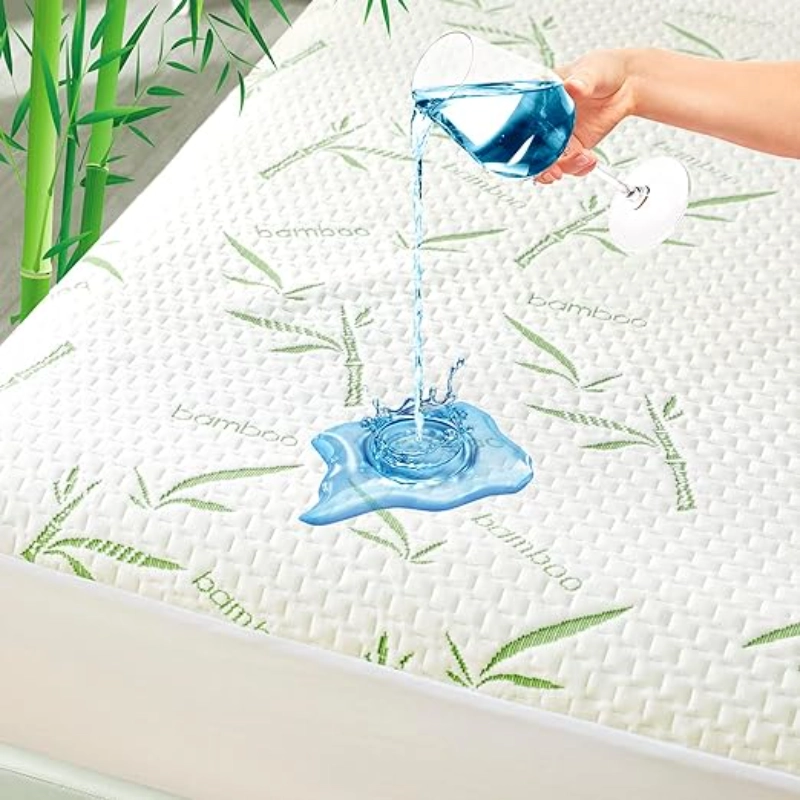
Summarize: Best Mattress Protector
Hopefully, this article helped you better understand the different types of mattress protectors and how to choose the style that best suits your needs. If you have any questions, you are welcome to contact Aoka.
Frequently Asked Questions
2. Microfiber Flannel Sheets: Unmatched Softness and Economic Value

